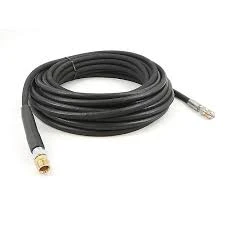stove pipe coupling
Stove Pipe Coupling A Comprehensive Overview
Stove pipe coupling is an essential component in the system of venting appliances that utilize solid fuels, such as wood, coal, or pellet stoves. This coupling facilitates the safe and efficient transfer of exhaust gases from the stove to the outdoor environment, playing a critical role in maintaining indoor air quality and ensuring the safe operation of heating appliances.
Understanding Stove Pipe Couplings
At its core, a stove pipe coupling is designed to join two sections of stove pipe, which are typically made from durable materials such as galvanized steel or stainless steel. These materials are chosen for their corrosion resistance and ability to withstand high temperatures. A well-designed coupling ensures a tight seal, minimizing the risk of leaks that can lead to the accumulation of harmful gases inside a home.
Stove pipe couplings come in various sizes and configurations to accommodate different stoves and installation requirements. Most often, they are available in both adjustable and fixed designs to provide flexibility during installation. Adjustability can be particularly beneficial in ensuring a proper fit in spaces with unique configurations, while fixed couplings offer a more rigid connection.
Installation Considerations
When installing a stove pipe coupling, several factors must be taken into account. Firstly, the alignment and angle of the pipes are crucial to ensure proper airflow and prevent the buildup of creosote, a byproduct of burning solid fuels. Creosote can be not only a fire hazard but also detrimental to the stove’s efficiency.
stove pipe coupling

Moreover, proper installation entails adhering to local building codes and standards. Different regions may have specific regulations regarding venting systems for solid-fuel appliances, and compliance with these standards is essential to ensure safety and effectiveness. Homeowners should consult with professional installers or certified chimney sweeps to ensure that both the stove and their venting systems are set up correctly.
Maintenance and Safety
Regular maintenance of stove pipe couplings and associated components is vital for long-term performance and safety. Users should routinely inspect the connections for signs of wear, rust, or leaks. Any indication of deterioration calls for immediate attention—prompt replacement of couplings can prevent more severe issues, including venting failures or dangerous gas leaks.
Cleaning is another critical aspect of maintenance. Accumulated soot and creosote should be removed regularly to ensure smooth exhaust flow. This not only enhances the efficiency of the stove but also minimizes the risk of chimney fires. In many cases, homeowners may choose to schedule annual inspections and cleanings with a professional to ensure that their stove and venting systems remain in optimal condition.
Conclusion
Stove pipe couplings may seem like a simple component, but their importance in the functionality and safety of solid-fuel-burning appliances cannot be overstated. By ensuring proper installation, maintenance, and adherence to safety regulations, homeowners can enjoy the warmth and comfort that these appliances provide while keeping risks at bay. Whether you are a seasoned wood stove user or considering your first purchase, understanding the role and maintenance of stove pipe couplings will enhance your overall experience and ensure a safe heating environment in your home. As always, when in doubt, consulting professionals is the best course of action to ensure your setup meets both safety standards and operational efficiency.
-
Ultimate Spiral Protection for Hoses & CablesNewsJun.26,2025
-
The Ultimate Quick-Connect Solutions for Every NeedNewsJun.26,2025
-
SAE J1401 Brake Hose: Reliable Choice for Safe BrakingNewsJun.26,2025
-
Reliable J2064 A/C Hoses for Real-World Cooling NeedsNewsJun.26,2025
-
Heavy-Duty Sewer Jetting Hoses Built to LastNewsJun.26,2025
-
Fix Power Steering Tube Leaks Fast – Durable & Affordable SolutionNewsJun.26,2025

